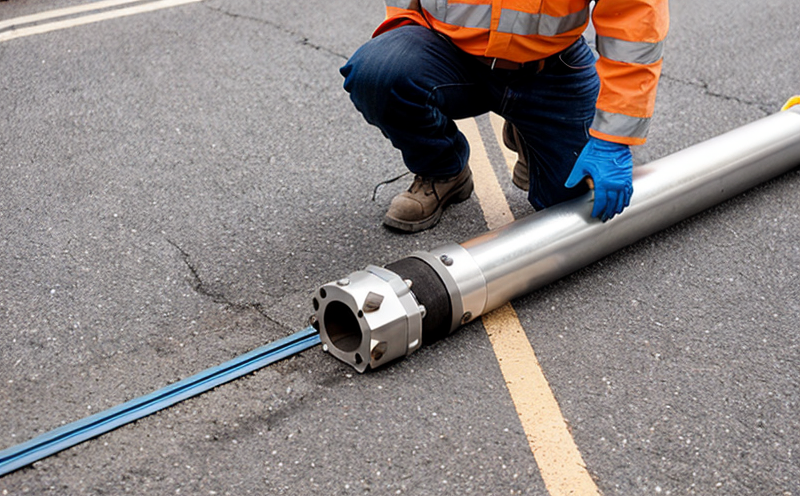Expansion joint inspection
The integrity of expansion joints in construction and building structures is critical to the longevity and safety of buildings. Expansion joints allow for movement, accommodating temperature changes, load-induced stresses, and other environmental factors without compromising the structural integrity of the building.
In the context of construction and building inspection, an expansion joint serves as a flexible connection between two structural members that are joined together but need to move independently due to thermal expansion or contraction. These joints are essential in walls, bridges, buildings, and any structure where differential movement might occur.
The quality assurance process for these joints must be comprehensive and precise. The inspection involves ensuring the joint’s materials meet specific standards, its installation is correctly executed according to design specifications, and it functions as intended under various environmental conditions. This ensures that structures can withstand the stresses and strains over their operational lifetimes without failing.
The testing methods for expansion joints are typically aligned with international standards such as ASTM E2386 or EN 1994-5:2017, which provide guidelines on how to inspect and test these elements. These standards ensure that the inspection process is consistent across different regions and adheres to global best practices.
The use of advanced testing equipment, such as ultrasonic testing devices and infrared cameras, can help in detecting any potential issues with expansion joints before they become critical failures. The aim is to identify any signs of deterioration early on so that necessary repairs or replacements can be made promptly.
Understanding the role of expansion joints within a building structure helps quality managers and compliance officers ensure that these elements are properly integrated into their inspection protocols. By doing so, they contribute significantly towards maintaining high standards in construction practices which ultimately leads to safer and more durable buildings.
Quality and Reliability Assurance
The quality assurance process for expansion joints involves several key steps aimed at ensuring that the joints meet all specified requirements. This includes careful planning, thorough inspection techniques, and precise measurement methods.
Firstly, it is important to select high-quality materials for the expansion joints. Materials should be chosen based on factors such as durability, flexibility, resistance to weathering, and compatibility with other building components. Once selected, these materials must undergo rigorous testing before being used in any project.
The installation process of expansion joints also requires meticulous attention to detail. Proper alignment is crucial for the joint’s functionality; deviations can lead to premature wear or failure over time. Additionally, ensuring that the sealant used fills all gaps completely prevents water ingress and other forms of damage.
During inspections, various tools are employed to check different aspects of an expansion joint's performance. Ultrasonic testing is often utilized to detect internal flaws within the metal components while infrared cameras help identify areas where heat transfer may be affecting the joint’s integrity. Regular maintenance checks should also be scheduled periodically throughout a building’s life cycle.
By adhering strictly to these quality assurance measures, construction professionals can guarantee that expansion joints will perform optimally throughout their intended lifespan. This not only enhances the aesthetic appeal of buildings but also contributes significantly towards enhancing overall safety standards.
Environmental and Sustainability Contributions
The use of expansion joints in construction plays a crucial role in promoting sustainable building practices. By accommodating movement within structures, they help prevent stress concentrations that could lead to structural failure or increased maintenance costs over time.
Sustainable design principles advocate for the integration of materials and systems that minimize environmental impact while maximizing efficiency and durability. Expansion joints contribute to this by allowing buildings to adapt naturally to changing conditions without requiring extensive modifications later on. This reduces waste associated with premature replacements due to wear caused by rigid connections.
Moreover, properly installed expansion joints can enhance energy efficiency within a building. They reduce the need for additional insulation layers since they allow better thermal performance through controlled expansion and contraction cycles. This contributes positively towards reducing heating and cooling requirements over time.
The inspection and maintenance of these joints also play an important part in environmental stewardship. Regular checks ensure that any issues are addressed promptly, preventing further degradation or potential hazards. Additionally, using recycled materials where possible during installation helps reduce the carbon footprint associated with new construction projects.
By focusing on quality assurance processes like those described above, constructors can leverage expansion joints effectively as part of broader sustainability strategies aimed at creating more resilient and eco-friendly structures.
Use Cases and Application Examples
| Structure Type | Description |
|---|---|
| High-rise Buildings | Incorporating expansion joints in high-rise buildings helps manage thermal movements, preventing cracks from forming between floors. |
| Road Bridges | Expansion joints are essential for road bridges to accommodate the contraction and expansion caused by temperature variations. |
| Commercial Properties | The use of these joints in commercial properties ensures that walls can flexibly adjust without compromising structural integrity. |
| Industrial Facilities | In industrial facilities, expansion joints are used to protect critical infrastructure against thermal stresses and vibrations. |
High-rise buildings often experience significant temperature fluctuations throughout the day. Expansion joints help manage these movements by allowing floors to expand and contract without causing damage or compromising the overall structure of the building.
Road bridges are particularly susceptible to changes in temperature, which can cause concrete slabs to shrink or expand over time. By incorporating expansion joints into bridge design, engineers ensure that such thermal movements do not lead to structural failures.
Commercial properties benefit from flexible construction elements like expansion joints by allowing walls and partitions to move freely while maintaining their aesthetic appeal. This flexibility helps prevent cracking and other forms of damage that could compromise the building's appearance or functionality.
Industrial facilities require robust infrastructure capable of withstanding harsh environmental conditions, including thermal stress and vibration. Expansion joints provide an effective solution for protecting critical components from these stresses by allowing them to move safely within their designated limits.





